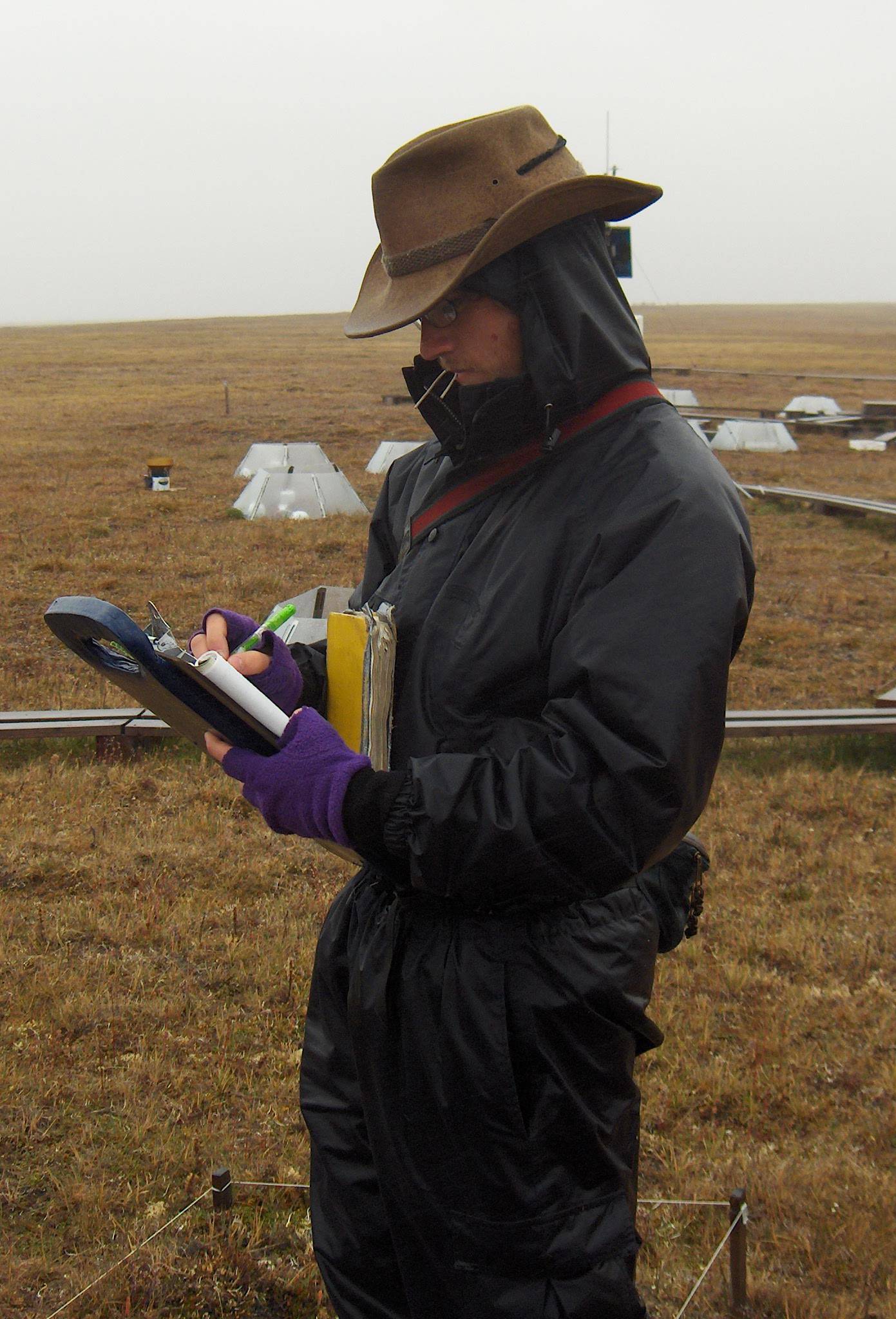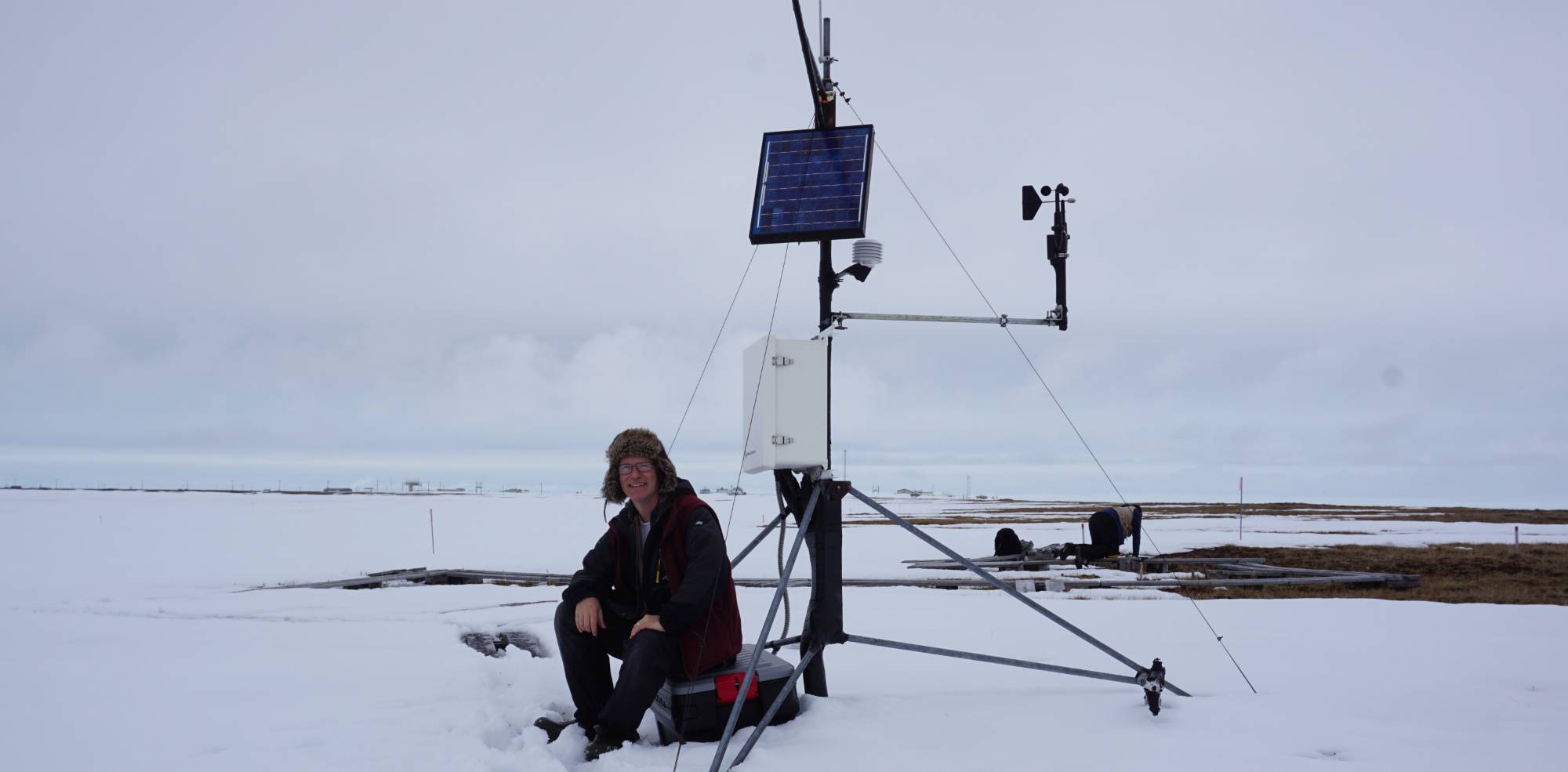CLAS Acts January 2020
Monthly newsletter of the TT faculty of CLAS


Unpredictability, Ice, and Fire—a climate conversation with Bob Hollister
By Monica Johnstone, PhD
Bob Hollister, professor of Biology, has been involved in a long-term project in the Arctic since 1995. I caught up to him for a November 2008 article in CLAS Acts. Curious about what the longitudinal data indicates, I sat down recently with Bob to discuss where we are now.
Bob does his research in association with ITEX. As their website explains, “The International Tundra Experiment (ITEX) is a network of researchers examining the impacts of warming on tundra ecosystems.” It began in 1990 and was set up to monitor vegetation change due to climate change in a way analogous to researchers monitoring sea ice, glaciers, and air temperature. All these years later, Bob is co-chair of the network.
“In 1990 climate change was settled science,” Bob muses, “and we were working on how to document it.” They agreed on measurement protocols, tried to stay low tech and inexpensive, and set about the work. For Bob this means going to the area near Barrow, Alaska every summer, usually with a number of GVSU students. They compare plots of tundra vegetation with other plots of tundra vegetation that have been warmed slightly and study the changes. They can make predictions about the control plots using the 30 years of data that has been accumulated.
They make use of drone footage and have satellite imagery that can precisely measure changes in how green or brown the Arctic is. “It’s greener, and some places are browning,” Bob explains.
“Alaska is a wetland and a desert,” Bob notes. The Arctic is actually not a very high precipitation place. There is ice and water around in large part due to how little it drains. Permafrost is very hard, harder to drill through than concrete as Bob knows from experience. That hardness tends to keep the peat-rich soils from draining. There are ice layers in the peat known as lenses. When temperatures rise and the lenses melt, there is drainage causing landscape collapse known as slumping. “When you drain a lake or melt a glacier, it’s brown.”
“As the seasonal thaws get deeper, the ice melts and the surface drops. It becomes a muddy mess. We have dramatic pictures of slumping events. The whole ground surface is lowering in the Barrow peninsula. A few millimeters a year.”
The peat then decomposes due to a combination of less moisture and warmer temperatures. “So it is a big deal that they are drier.”
I ask about the Arctic fires that were reported last summer. “The Arctic fires are a big deal.” Bob tells me that in lower temperature fires the vegetation burns; in higher temperature fires the peat burns—essentially losing the “soil” and releasing immense amounts of sequestered carbon. His research is about measuring the subtle release of carbon and methane with warming and vegetation change, but contrasts that with the enormous release when the peat burns.
“Tundra is going from being a carbon sink, accumulating peat, to a source as the old stored peat metabolizes. Alaska and Siberia are losing lots of ponds. Warming amplifies it. It gets drier. Soils disappear.”
Lightning, once rare, is more common now and is the source of many Arctic fires. While people with cigarettes are sometimes to blame, lightning seems to be the primary source of fires, and there are more storms now.
Bob is now the lead PI on the 5-year grant proposal for $4 million to be divided between GVSU, Florida International University, University of Texas at El Paso, and University of Alaska at Anchorage. In addition to conducting research, Bob is involved in outreach to kids in the community in the Barrow area. In fact, to reach that key audience he had to travel in April to talk with them because his usual summer research window is outside of their school year.
He has also given talks at the Grand Rapids Public Museum, participated in Super Science Saturdays and made visits to area schools, often when they found him on the Artic Ecology Program website. He’d like to do even more outreach and has been active in the Climate Change Education Solutions Network.
“There are pretty major changes. No one in Alaska doubts climate change. Really few in the world doubt climate change. It’s weird. Up in that area they know their economy is tied to oil but they don’t deny. There it is easy to pinpoint changes. Here changes are dismissed as other stuff. But the changes in increased precipitation, higher lake levels, ice fishing conditions becoming no longer predictable—changes are happening here but up there it is more obvious. Almost all of the predictions are on the very conservative side because scientists are not generally alarmist, work on the basis of consensus. Exceedingly conservative. We are seeing way more sea level rise. Faster melting,” Bob observes. “There is credible evidence that Greenland will not have ice at the 1,000 year scale.”
Bob notes that like first responders, it is being suggested that environmental scientists need counseling to be part of their profession. “But I’m more Star Trek than Blade Runner,” Bob quips to describe his outlook. “The world is a better place in many respects,” Bob notes enumerating global fertility decline that will slow population increase, that hunger is not an issue to the degree it once was, that pollution in the US has made notable improvements.
“The unpredictability is the bigger issue. Despite the ‘vortex’ week last year you really have to talk to the bait shop owner and snowmobile rental folks who know it was not a particularly cold Michigan winter. Up in Alaska they can’t count on being able to use transportation over ice. They have to go by plane and that is astronomically more expensive.”
“I try not to be political in order to be credible. It’s immoral not to somehow get involved.” Students can become involved in this research. At the time we talked, Bob was actively recruiting student researchers.
I mention that I’ll be planting some trees in my yard and am taking into account changes that will influence my choice of species. Bob tells me that sugar maple will be outside its climatic niche in Michigan by the end of the century, well within the life span of the trees I mean to plant. I will think about this a great deal as I rake what only seems like an endless supply.

FROM THE DEAN’S DESK
Happy New Year!
2020 is the sort of year that captures the imagination. Dave Evans, the chief futurist for Cisco Visual Networking, some years back predicted, "By 2020, predicting the future will be commonplace for the average person." Well, we all take a stab at it, but the predictability of the world does not seem to have increased, despite strides in data collection.
Instead of a questionable prediction, I’d like to offer something I do feel sure about, our core identity—we teach our students well. We can build on that whenever we make sure that our students are prepared to go out and tell their story, to describe their intellectual growth, and to make the case for the education they receive here. When we equip our graduates in this way, to say what they have learned—in their major and by being liberally educated--we will do more than advertising dollars can to stabilize the future. Let me say with confidence, we will keep good numbers and attract students we are eager to teach because our graduates vouch for our quality, the community sees our impact, and our excellent and underestimated scholarship makes a difference in ways that matter. In case nobody told you today, you—you there slouching at your computer, you over here scrolling through my deathless prose on your phone—you make all the difference in upholding and renewing the character and quality of this distinctive place.
When your FARs come in, I will have--for the final time--the extended pleasure of reading the most recent chapter of all your academic stories. It is a big job to go through them, yes, but it’s among my favorite tasks—invigorating, uplifting work. I suspect I’m going to miss the vicarious thrill of your achievements and in particular the work you do with students, and the extra mile you go directly on their behalf—please never be shy about stopping me to tell me about the dragons you’ve most recently slain, the bridges you’ve built, the paths you’ve made straight. Some of your work is not always easily seen, but nobody knows the enormity of it better. I have been honored to represent it on your behalf for these 16 years.
Wishing you a 2020 full of potential, energy, and achievement—and of confidently managing the unpredictability of future worlds.
